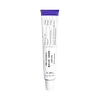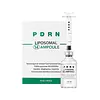What's inside
What's inside
 Key Ingredients
Key Ingredients

 Benefits
Benefits

 Ingredients Side-by-side
Ingredients Side-by-side

Water
Skin ConditioningCentella Asiatica Leaf Water
Skin Conditioning1,2-Hexanediol
Skin ConditioningPanthenol
Skin ConditioningGlycerin
HumectantGlyceryl Acrylate/Acrylic Acid Copolymer
HumectantSodium Dna
Skin ConditioningButylene Glycol
HumectantDicaprylyl Ether
EmollientTocopherol
AntioxidantVinyldimethicone
Dimethiconol
EmollientHydrogenated Polydecene
EmollientCaprylyl Methicone
Skin ConditioningDicaprylyl Carbonate
EmollientPentylene Glycol
Skin ConditioningHydroxyethyl Acrylate/Sodium Acryloyldimethyl Taurate Copolymer
Emulsion StabilisingCetearyl Olivate
Sorbitan Olivate
EmulsifyingAcrylates/C10-30 Alkyl Acrylate Crosspolymer
Emulsion StabilisingAminomethyl Propanediol
BufferingEthylhexylglycerin
Skin ConditioningXanthan Gum
EmulsifyingHydrolyzed Hyaluronic Acid
HumectantHyaluronic Acid
HumectantSodium Phytate
Sodium Hyaluronate
HumectantSh-Oligopeptide-1
Skin ConditioningCaprylic/Capric Triglyceride
MaskingBeta-Sitosterol
Emulsion StabilisingHydrogenated Lecithin
EmulsifyingPolyglyceryl-4 Caprate
EmulsifyingPolyglyceryl-6 Caprylate
EmulsifyingAureobasidium Pullulans Ferment
Skin ConditioningWater, Centella Asiatica Leaf Water, 1,2-Hexanediol, Panthenol, Glycerin, Glyceryl Acrylate/Acrylic Acid Copolymer, Sodium Dna, Butylene Glycol, Dicaprylyl Ether, Tocopherol, Vinyldimethicone, Dimethiconol, Hydrogenated Polydecene, Caprylyl Methicone, Dicaprylyl Carbonate, Pentylene Glycol, Hydroxyethyl Acrylate/Sodium Acryloyldimethyl Taurate Copolymer, Cetearyl Olivate, Sorbitan Olivate, Acrylates/C10-30 Alkyl Acrylate Crosspolymer, Aminomethyl Propanediol, Ethylhexylglycerin, Xanthan Gum, Hydrolyzed Hyaluronic Acid, Hyaluronic Acid, Sodium Phytate, Sodium Hyaluronate, Sh-Oligopeptide-1, Caprylic/Capric Triglyceride, Beta-Sitosterol, Hydrogenated Lecithin, Polyglyceryl-4 Caprate, Polyglyceryl-6 Caprylate, Aureobasidium Pullulans Ferment
Water
Skin ConditioningDipropylene Glycol
HumectantPropanediol
SolventGlycerin
HumectantNiacinamide
SmoothingButylene Glycol
HumectantGlycereth-25 PCA Isostearate
EmulsifyingDiethoxyethyl Succinate
SolventGlycereth-26
HumectantIsopentyldiol
HumectantPentylene Glycol
Skin ConditioningBetaine
HumectantHydrogenated Lecithin
EmulsifyingChondrus Crispus Powder
AbrasivePolyglycerin-3
HumectantBisabolol
Masking3-O-Ethyl Ascorbic Acid
Skin ConditioningSodium Dna
Skin ConditioningXylitylglucoside
HumectantAnhydroxylitol
HumectantSodium Surfactin
CleansingXylitol
HumectantGlutathione
Anastatica Hierochuntica Extract
AstringentHydrolyzed Collagen Extract
Skin ProtectingHydrolyzed Collagen
EmollientCollagen Extract
Skin ConditioningCollagen Amino Acids
MoisturisingCollagen Water
HumectantSoluble Collagen
HumectantLactobacillus/Collagen Ferment Filtrate
HumectantTromethamine
BufferingCarbomer
Emulsion StabilisingLeontopodium Alpinum Flower Extract
Skin ConditioningHouttuynia Cordata Extract
Skin ConditioningPanax Ginseng Root Extract
EmollientMorus Alba Bark Extract
Skin ConditioningBellis Perennis Flower Extract
Skin ConditioningCamellia Sinensis Leaf Extract
AntimicrobialSaussurea Involucrata Extract
HumectantLilium Candidum Flower Extract
Skin Conditioning1,2-Hexanediol
Skin ConditioningGlucose
HumectantNelumbo Nucifera Flower Extract
Skin ConditioningXanthan Gum
EmulsifyingAdenosine
Skin ConditioningDisodium EDTA
Ethylhexylglycerin
Skin ConditioningBenzyl Glycol
SolventHydroxyacetophenone
AntioxidantWater, Dipropylene Glycol, Propanediol, Glycerin, Niacinamide, Butylene Glycol, Glycereth-25 PCA Isostearate, Diethoxyethyl Succinate, Glycereth-26, Isopentyldiol, Pentylene Glycol, Betaine, Hydrogenated Lecithin, Chondrus Crispus Powder, Polyglycerin-3, Bisabolol, 3-O-Ethyl Ascorbic Acid, Sodium Dna, Xylitylglucoside, Anhydroxylitol, Sodium Surfactin, Xylitol, Glutathione, Anastatica Hierochuntica Extract, Hydrolyzed Collagen Extract, Hydrolyzed Collagen, Collagen Extract, Collagen Amino Acids, Collagen Water, Soluble Collagen, Lactobacillus/Collagen Ferment Filtrate, Tromethamine, Carbomer, Leontopodium Alpinum Flower Extract, Houttuynia Cordata Extract, Panax Ginseng Root Extract, Morus Alba Bark Extract, Bellis Perennis Flower Extract, Camellia Sinensis Leaf Extract, Saussurea Involucrata Extract, Lilium Candidum Flower Extract, 1,2-Hexanediol, Glucose, Nelumbo Nucifera Flower Extract, Xanthan Gum, Adenosine, Disodium EDTA, Ethylhexylglycerin, Benzyl Glycol, Hydroxyacetophenone
Ingredients Explained
These ingredients are found in both products.
Ingredients higher up in an ingredient list are typically present in a larger amount.
1,2-Hexanediol is a synthetic liquid and another multi-functional powerhouse.
It is a:
- Humectant, drawing moisture into the skin
- Emollient, helping to soften skin
- Solvent, dispersing and stabilizing formulas
- Preservative booster, enhancing the antimicrobial activity of other preservatives
Butylene Glycol (or BG) is used within cosmetic products for a few different reasons:
Overall, Butylene Glycol is a safe and well-rounded ingredient that works well with other ingredients.
Though this ingredient works well with most skin types, some people with sensitive skin may experience a reaction such as allergic rashes, closed comedones, or itchiness.
Learn more about Butylene GlycolEthylhexylglycerin (we can't pronounce this either) is commonly used as a preservative and skin softener. It is derived from glyceryl.
You might see Ethylhexylglycerin often paired with other preservatives such as phenoxyethanol. Ethylhexylglycerin has been found to increase the effectiveness of these other preservatives.
Glycerin is already naturally found in your skin. It helps moisturize and protect your skin.
A study from 2016 found glycerin to be more effective as a humectant than AHAs and hyaluronic acid.
As a humectant, it helps the skin stay hydrated by pulling moisture to your skin. The low molecular weight of glycerin allows it to pull moisture into the deeper layers of your skin.
Hydrated skin improves your skin barrier; Your skin barrier helps protect against irritants and bacteria.
Glycerin has also been found to have antimicrobial and antiviral properties. Due to these properties, glycerin is often used in wound and burn treatments.
In cosmetics, glycerin is usually derived from plants such as soybean or palm. However, it can also be sourced from animals, such as tallow or animal fat.
This ingredient is organic, colorless, odorless, and non-toxic.
Glycerin is the name for this ingredient in American English. British English uses Glycerol/Glycerine.
Learn more about GlycerinHydrogenated Lecithin is created from the hydrogenation of lecithin (a group of phospholipids). Hydrogenation is a chemical reaction between hydrogen and another element.
This ingredient is an emollient and emulsifier. As an emollient, it helps soften skin by trapping moisture within. As an emulsifier, it prevents oil and water ingredients from separating.
Pentylene glycol is typically used within a product to thicken it. It also adds a smooth, soft, and moisturizing feel to the product. It is naturally found in plants such as sugar beets.
The hydrophilic trait of Pentylene Glycol makes it a humectant. As a humectant, Pentylene Glycol helps draw moisture from the air to your skin. This can help keep your skin hydrated.
This property also makes Pentylene Glycol a great texture enhancer. It can also help thicken or stabilize a product.
Pentylene Glycol also acts as a mild preservative and helps to keep a product microbe-free.
Some people may experience mild eye and skin irritation from Pentylene Glycol. We always recommend speaking with a professional about using this ingredient in your routine.
Pentylene Glycol has a low molecular weight and is part of the 1,2-glycol family.
Learn more about Pentylene GlycolSodium DNA is an emerging anti-aging ingredient.
It is created by taking deoxyribonucleic acid (DNA) and purifying it with sodium hydroxide.
The DNA is extracted from several different animal sources, including: calf thymus, the gonadic tissue of a male sturgeon, or herring / salmon sperm.
You have probably seen this ingredient in anti-aging skincare. But what is it?
DNA is composed of nucleotides, or chemical building blocks. Nucleotides include adenine (A), thymine (T), guanine (G), and cytosine (C). Talk about a flashback to biology! Nucleosides are formed from these nucleotides.
The science behind Sodium DNA is based on an ingredient called Polydeoxyribonucleotide or PDRN.
PDRN are DNA fragments mainly extracted from the sperm cells of trout or salmon. Meaning, PDRN can be derived from Sodium DNA.
PDRN consists of chains of nucleotides and nucleosides mentioned above. They can range anywhere from 80 - 2000 pairs.
Studies show PDRN has the following properties:
Most of the research on PDRN has been done using injectable forms. That’s important, because PDRN is a large molecule and doesn’t absorb well through the skin. So if you’re applying it topically, the effects are likely to be much milder.
Still, topical Sodium DNA is emerging as a trendy anti-aging ingredient. It’s generally well-tolerated and offers good biocompatibility with human skin, making it a low-risk addition to most routines.
Further studies are needed to truly confirm this ingredients anti-aging ability (Remember, retinol has decades of research!).
When using this ingredient, is is best to ask a brand about the source of their Sodium DNA. You'll want to find products where the Sodium DNA is sourced from fish. Some Sodium DNA is derived from calf / cow thymus.
Needless to say, this ingredient is not vegan.
Learn more about Sodium DnaWater. It's the most common cosmetic ingredient of all. You'll usually see it at the top of ingredient lists, meaning that it makes up the largest part of the product.
So why is it so popular? Water most often acts as a solvent - this means that it helps dissolve other ingredients into the formulation.
You'll also recognize water as that liquid we all need to stay alive. If you see this, drink a glass of water. Stay hydrated!
Learn more about WaterXanthan gum is used as a stabilizer and thickener within cosmetic products. It helps give products a sticky, thick feeling - preventing them from being too runny.
On the technical side of things, xanthan gum is a polysaccharide - a combination consisting of multiple sugar molecules bonded together.
Xanthan gum is a pretty common and great ingredient. It is a natural, non-toxic, non-irritating ingredient that is also commonly used in food products.
Learn more about Xanthan Gum